
Do you have a question about the Siemens SIMOCODE 3UF and is the answer not in the manual?
| Brand | Siemens |
|---|---|
| Model | SIMOCODE 3UF |
| Category | Control Systems |
| Language | English |
Overview of device-specific information via the Identification > Device dialog box.
Details on plant identifier, location designation, user-specific description, and installation date.
Overview of device-specific information for system documentation, including manufacturer and order details.
Overview of device configuration, including basic unit, version, and thermistor options.
Configuration options for current, voltage, digital, and operator panel modules for Pro V PN.
Configuration of PROFINET parameters like MAC address and IP settings for the device.
Configuration of diagnostic data reporting via PROFINET, including device faults and errors.
Settings for overload protection, including tripping class, set current (Is1), and ranges.
Configuration of phase unbalance monitoring, including level, response, and delay settings.
Configuration for stalled rotor protection, including level, response, and delay.
Configuration for thermistor protection, response at tripping level, and sensor fault detection.
Overview of motor control functions and selection of control stations.
Management, switching, and prioritization of up to four different control stations.
Details on control stations: Local Control, PLC/DCS, PC/OPC-UA, and Operator Panel.
Selection of four operating modes (Local 1-3, Remote/Automatic) using S1/S2 mode selectors.
Configuration for Local Control (LC) commands via direct vicinity of the motor.
Configuration for PLC/DCS control commands via PROFINET control telegram.
Configuration for PC/OPC-UA control commands for data access and transfer.
Configuration for control commands issued via the buttons of the Operator Panel.
Assignment of ON/OFF control command releases for each control station and operating mode.
Overview of control functions for load feeders, including sequence monitoring and fault handling.
Details on control functions like direct starters, reversing starters, and their features.
Configuration of operating modes, including non-maintained command mode and saving change-over command.
Description of auxiliary control inputs like 'Feedback ON' for monitoring operations.
Configuration of timing parameters like feedback time, execution time, and interlocking time.
Configuration for internal earth-fault monitoring using current or voltage measuring modules.
Internal earth-fault monitoring details for 1st generation current/voltage modules, including operating conditions and false tripping notices.
Internal earth-fault monitoring details for 2nd generation current/voltage modules, including operating conditions and trip level activity.
Configuration for external earth-fault monitoring using residual current transformers and earth-fault modules.
Configuration of current limit monitoring for process monitoring, supporting two-phase motor current.
Configuration for upper current limit monitoring, including trip and warning levels.
Configuration for lower current limit monitoring, including trip and warning levels.
Configuration for undervoltage monitoring, including trip and warning levels and activity.
Configuration for Cos-Phi monitoring to assess load condition and distinguish faults.
Monitoring of active power to assess device/system state and motor load.
Monitoring of active power to assess device/system state and motor load.
Configuration for upper active power limit monitoring, including trip and warning levels.
Configuration for lower active power limit monitoring, including trip and warning levels.
Monitoring of analog signals (0/4-20 mA) for upper and lower limits.
Monitoring operating hours, stop times, and limiting motor starts to prevent downtime.
Monitoring operating hours, stop times, and limiting motor starts to prevent downtime.
Recording motor operating hours for maintenance prompts and service life tracking.
Monitoring motor stop times to prevent non-availability, especially for dual drives.
Limiting motor starts within a time frame to prevent damage and ensure proper commissioning.
Configuration for temperature monitoring (overtemperature) for motor windings, bearings, etc.
Configuration for temperature monitoring (overtemperature) for motor windings, bearings, etc.
Function to monitor intervals for verification tests and ensure safety circuit functionality.
Configuration of digital inputs on the Basic Unit, including terminals and function assignments.
Configuration of digital inputs on Digital Modules, supporting up to twelve binary inputs.
Configuration of analog inputs on Analog Modules for monitoring transducer signals.
Configuration of temperature inputs on Temperature Modules for monitoring motor component temperatures.
Processing cyclic data from the automation system via PROFINET using Cyclic Receive function blocks.
Transferring further data to SIMOCODE pro via OPC UA using OPC UA Receive function blocks.
Configuration of relay outputs on the Basic Unit for switching contactors, lamps, and displaying status.
Controlling operator panel LEDs for displaying status information using the OP-LED function block.
Configuration of relay outputs on Digital Module 1 for controlling contactors or lamps.
Configuration of relay outputs on Digital Module 2 for controlling contactors or lamps.
Outputting analog values from SIMOCODE pro as 0/4-20 mA signals using Analog Module Output function blocks.
Specifying information to be transferred via OPC UA using OPC UA Send function blocks.
Specifying information for transfer to automation system via PROFINET using Cyclic Send function blocks.
Performing device tests and resetting faults using the TEST/RESET button or function blocks.
Performing 'cold starting' function tests using the Test Position Feedback (TPF) function block.
Using External Fault function blocks to monitor statuses and generate fault messages.
Using External Fault function blocks to monitor statuses and generate fault messages.
Function block to return the Positioner to a safe position.
Monitoring power failures and managing automatic reconnection of drives after power return.
Function to delete thermal memory and enable immediate motor restart after an overload trip.
Information on non-safety-oriented signals and the DM-F Local/PROFIsafe safety functions.
Information on non-safety-oriented signals and the DM-F Local/PROFIsafe safety functions.
Monitoring PLC communication via PROFINET and PLC operating status in Remote mode.
Configuration of truth tables for logic operations with 3I-1O, 2I-1O, and 5I-2O configurations.
Integrated counter function for counting events, with input for increment/decrement and reset.
Integrated timer function for various delay types, activated by input and reset signals.
Signal conditioning functions like Non Inverting, Inverting, and edge detection with memory.
Non-volatile elements that retain output signals after supply voltage failure.
Flashing logic module for creating flashing signals on operator panel LEDs.
Flickering logic modules to assign flickering function to operator panel LEDs.
Monitoring analog values for limit overshooting or undershooting.
Calculation modules for adapting, calculating, and converting analog values using defined formulas.
Analog multiplexer to output one of four possible analog values based on control signals.
Modulates analog input to digital pulse output, proportional to the analog value.
Settings for return to main display, language selection, and contrast adjustment.
Protocol for flexible shutdown of loads, supported by SIMOCODE pro V PN.
Settings for recording analog values, including trigger, sampling rate, and pre-trigger.
Recording and annotating 'Error/Fault' and 'Mains on' events with timestamps.
Logging DM-F Local/PROFIsafe events like 'Enabling circuit closed/open'.
Sending commands to SIMOCODE pro, such as memory module operations and write protection.
Viewing actual device configuration and verifying hardware diagnostics against projected configuration.
Viewing actual device configuration and verifying hardware diagnostics against projected configuration.
Reading the existing configuration of modules if a connection is established via SIMOCODE pro.
Verifying if the projected device configuration matches the real device configuration.
Overview of password protection settings, including setting and changing passwords.
Overview of password protection settings, including setting and changing passwords.
Activating/deactivating password protection and assigning a password for SIMOCODE pro.
Procedure to change an already assigned password for SIMOCODE pro.
Display of various measured values including current, thermal motor model, and voltage.
Display of statistical data like motor operating hours, overload trips, and number of starts.
Initiating operations like branch control, fault acknowledgment, and hardware tests.
References to sections detailing control stations, operation mode selectors, and specific station types.
References to sections detailing faults, warnings, and status information.
Information on various faults, their meaning, possible causes, and error processing.
Information on warnings related to protection functions like overload, unbalance, and thermistor.
Indication of events like parameter blocking, configuration faults, and password issues.
Performing online tests on inputs, outputs, and truth tables.
Displaying the current status of hardware modules and their inputs/outputs.
Selecting measured values for trend display, including device settings and trend configuration.
Recording analog values over time, displaying Y-axis (value) and X-axis (time).
Recording analog values over time, displaying Y-axis (value) and X-axis (time).
Identifying causes for download failures related to parameterization, passwords, and device configuration.
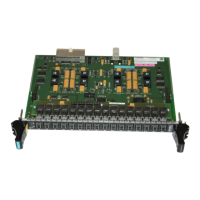
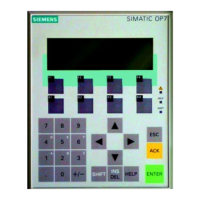


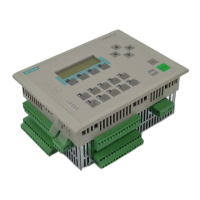
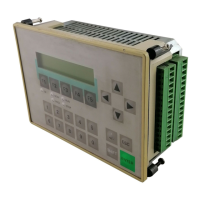


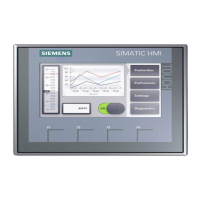



